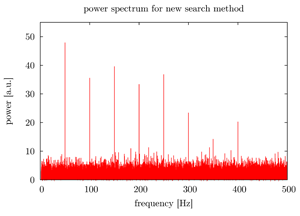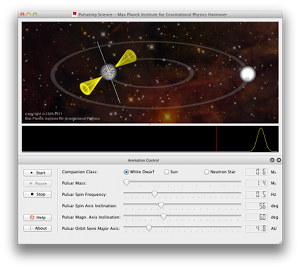WARNING: This website is obsolete! Please follow this link to get to the new Einstein@Home website!
The Einstein@Home Arecibo Radio Pulsar search: Topic 4 |
|
What's new about our new search method? |
[previous] [home] [next] |
||||||
|
Searches for binary radio pulsars so far were called "acceleration searches" or "sideband searches". The former correct for the varying time-delays by using an approximation of the binary orbit which is valid only if the observation time is much less than the orbital period of the binary system. The latter is efficient only when many binary orbits are visible during the observation time. There is a gap between those methods where both experience a large loss in sensitivity. Our search is using data sets covering 5 minutes of observation. Thus, the acceleration search becomes significantly less sensitive for orbital periods shorter than 50 minutes. The sideband search loses sensitivity for orbital periods longer than 3 minutes. The new search method will close the resulting gap and can correct for binary periods down to 11 minutes, meaning that we can "see" up to half an orbit of such a binary (with its strongly varying Doppler effect). The figures to the right illustrate the progress achieved by using this procedure.
Interactive Binary Pulsar Simulation Explore the Doppler effect in a binary pulsar system by downloading the "Pulsating Science" 3D
visualisation software. Generate, view, and modify binary pulsar systems and their radio pulsations.
The lower picture on the right shows a screenshot from this interactive simulation.
If you experience problems running the executables above and/or have the Qt runtime libraries (version 4.7 or later, MinGW edition when using Windows) already installed on your system, please follow the links below to download an executable for your system:
The source code is licensed under the GNU General Public License (version 3) and is available via git using the following clone URL: |
|
Last updated on 10 June 2009
This material is based upon work supported by the National Science Foundation (NSF) under Grants PHY-1104902, PHY-1104617 and PHY-1105572 and by the Max Planck Gesellschaft (MPG). Any opinions, findings, and conclusions or recommendations expressed in this material are those of the investigators and do not necessarily reflect the views of the NSF or the MPG.
Copyright © 2024 Einstein@Home


